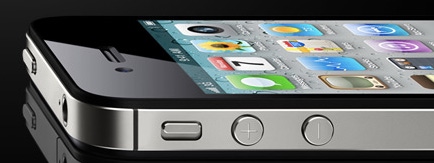It's finally here: iPhone on the Verizon network. For Verizon customers, it's like Christmas on a three-week delay. But it's worth the wait, right? For some, the Verizon iPhone is the best thing that ever happened to carriers and cell phones. Or is it?
January 11, 2011

 It’s finally here: iPhone on the Verizon network. For Verizon customers, it’s like Christmas on a three-week delay. But it’s worth the wait, right? For some, the Verizon iPhone is the best thing that ever happened to carriers and cell phones. Or is it?
It’s finally here: iPhone on the Verizon network. For Verizon customers, it’s like Christmas on a three-week delay. But it’s worth the wait, right? For some, the Verizon iPhone is the best thing that ever happened to carriers and cell phones. Or is it?
To cut through the hoopla and get to the straight dope, here’s our take on what having the iPhone on the Verizon network does and doesn’t offer users. Read on …
The Good
Choice. It’s never mentioned enough, but choice is important and breeds competition and innovation. With Verizon now part of the iPhone tribe, there’s finally a choice of networks. Although details on data plans haven’t yet been released, it’s likely they’ll be much different from the plans AT&T offers. What’s more, the choice may put pressure on AT&T to offer something competitive.
Also, the Verizon iPhone is running iOS Version 4.2.5, an upgrade from the iOS 4.2.1 available now on the AT&T network. That revision likely includes software tweaks for CDMA technology along with the mobile hotspot feature that the Verzion iPhone has right out of the box. That’s pretty nice. The antenna also has been slightly redesigned, apparently eliminating death-grip issues. You can see in the picture above that one of the antenna lines is different from the AT&T iPhone (and you can see Engadget’s detailed photos here). Plus, as a former Verizon customer, I can honestly say that Verizon manages to get service in the most bizarre and barren places. It might not be 3G, but it’s service and that’s a nice feeling.
But the buck pretty much stops there with …
The Bad
One of the main reasons why I thought Apple wouldn’t put an iPhone on Verizon in 2011 was because of the lack of 4G LTE proliferation. But according to Tim Cook, COO of Apple and Steve Jobs’ right-hand man, the demand was so strong they the company just decided to do it. Seriously. Cook said Apple had been testing the Verizon network for the last year, with talks about bringing the phone to the network starting way back in 2008.
But CDMA technology has some inherent problems, and when Tim Cook was asked how the iPhone 4 on Verizon would handle talk and data simultaneously, his response was, “It’s consistent with other CDMA devices now.” Nice dodge, but an easy translation. It doesn’t do talk and data simultaneously. So that mobile hotspot feature will essentially have you juggling whether you want to pick up an incoming call and kill your device connections or skip the call altogether.
In redesigning the antenna, Apple also moved all the buttons on the left of the phone (volume and lock) slightly lower than the AT&T version. That means most existing iPhone 4 cases — including Apple’s own iPhone 4 bumper — will not fit the Verizon iPhone correctly. It won’t be an issue for those phone cases that have a wide open space to accommodate the buttons on the side, but it’s an interesting distinction.
The Ugly
Before you rush out and buy that iPhone 4 on Verizon, consider what kind of investment you’re making. The Verizon iPhone doesn’t have a SIM card, and without a SIM card, you’re pretty much stuck on Verizon in the United States and at the mercy of whatever CDMA service (or Verizon international plan) is around if you travel outside the country. If you’ve invested in an AT&T iPhone 4, you’re in luck, because with a few low-level hacking tweaks, you can world-enable your phone. Traveling to Europe? Buy a prepaid SIM card in any mobile phone shop and you’re off to the races.
What’s more, AT&T likely will be getting new iPhone upgrades before Verizon does, and that means iPhone 5 for the Verizon network might not show up until after AT&T’s LTE iPhone 5 arrives. Tim Cook had no comment on whether the iPhone for Verizon will receive a yearly (in this case, every January) cycle update like the AT&T iPhone does every summer, but my guess is that you won’t see a new Verizon iPhone until LTE chips are compatible with an Apple redesign. Not wanting to do a complete redesign is one of the reasons Tim Cook cited why the company went CDMA.
The Bottom Line
Apple wins big and so does Verzion. Consumers have the ultimate win and competition is alive and well in America. If you’re an iPhone user, or thinking of becoming one specifically on Verizon, let us know why. When the Verizon iPhone hits the hands of consumers early in February, we’ll be sure to deconstruct the buzz and update you.
Sign up for The VAR Guy’s Weekly Newsletter, Webcasts and Resource Center. Follow The VAR Guy via RSS, Facebook and Twitter. Follow experts at VARtweet. Read The VAR Guy’s editorial disclosures here.
About the Author(s)
You May Also Like


